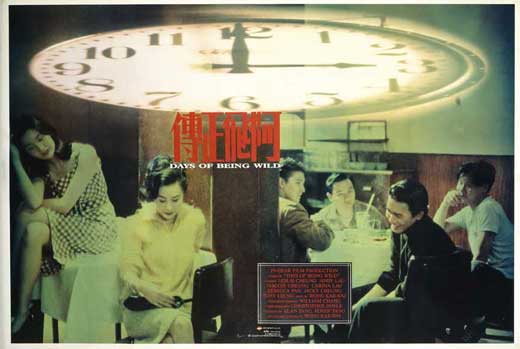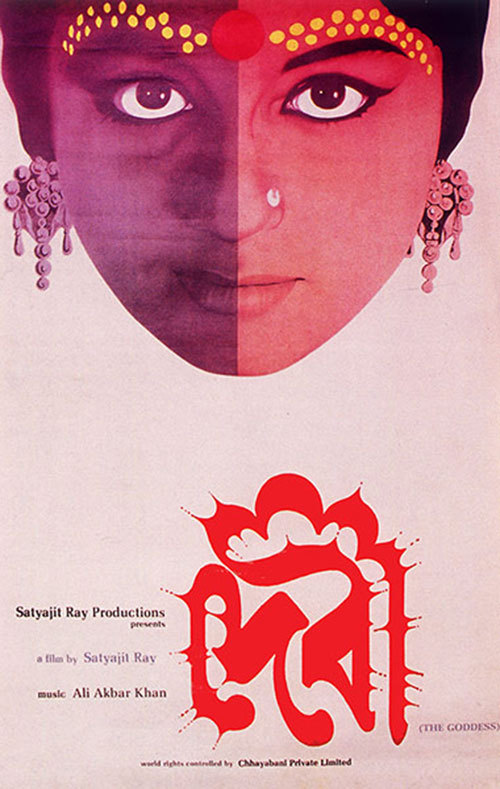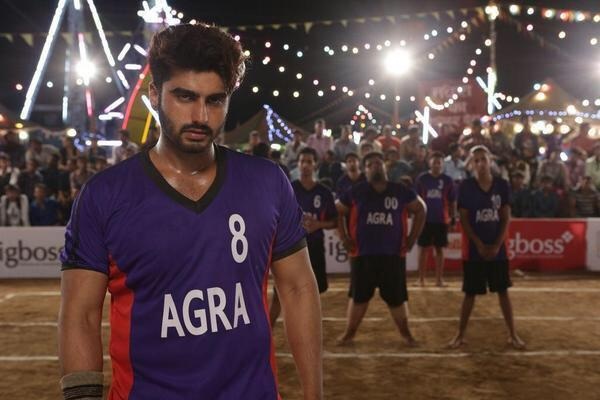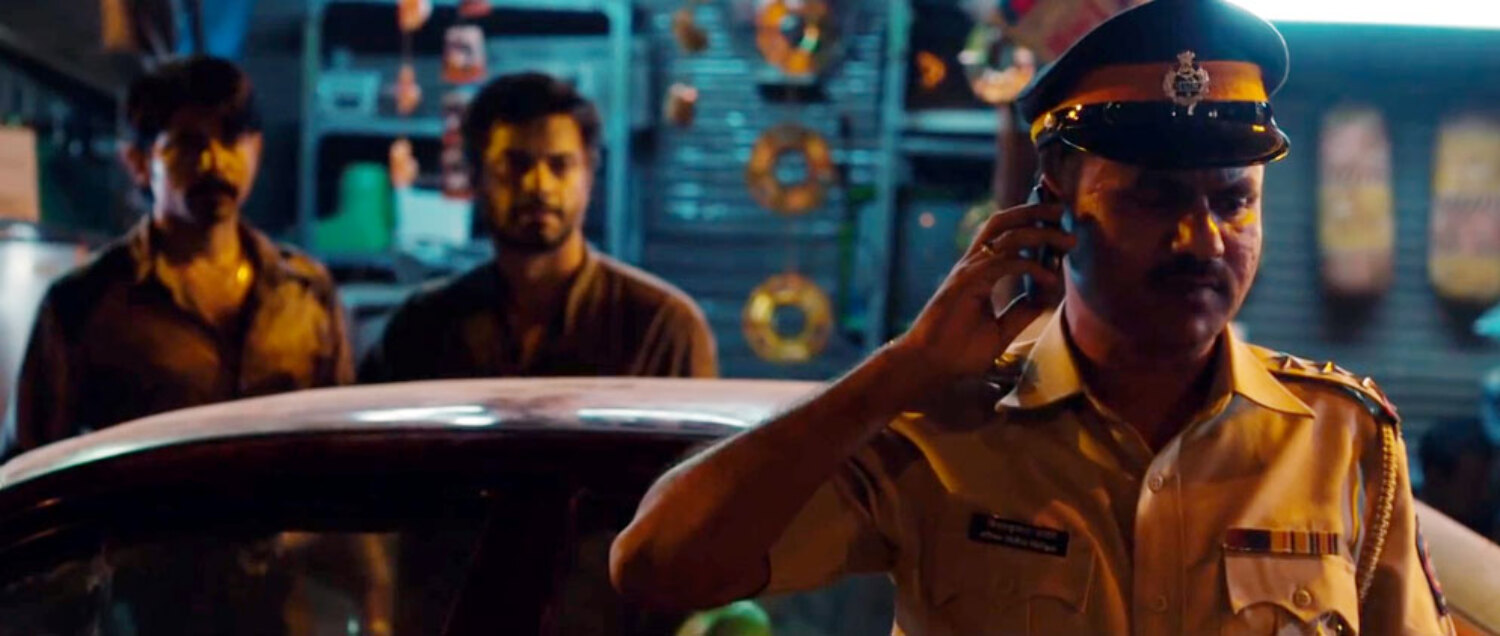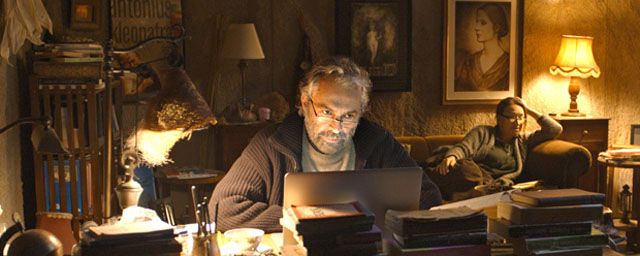 |
| A painting by the masterly Nainsukh of Guler. |
AS AN UNDERGRADUATE AT DELHI UNIVERSITY, I once found myself at a conference on the Padshahnama. The average history student’s exposure to Mughal art and architecture was relegated to a hurried lecture at the end of the second year and, suffice it to say, when I entered the air-conditioned darkness of the British Council auditorium, I knew nothing at all about Abdul Hamid Lahori’s gloriously illustrated history of Shah Jahan’s reign. Nor did I recognise the dignified gentleman with a trim white moustache who stood behind the podium, illuminating each jewel-like folio. But as he pointed out how the spatial divisions within each painting mirrored the hierarchy of the Mughal court circa 1635, or how the styles of the courtiers’ turbans and patkas—sashes, worn around the waist—marked differences of region and status, I remember being spellbound. It was only later that I realised how lucky I had been: I could have received no finer introduction to what art history is capable of than through BN Goswamy.
Goswamy, now eighty-one years old and a professor emeritus of art history at Panjab University, has over a dozen books on premodern Indian painting to his credit. These range from works of synthesis, such as his book on Indian manuscripts, to works of close observation, such as his study of the Mughal patka, which draws on the textile collection of Ahmedabad’s Calico Museum. In 2010, he published his first book for younger readers, Ranga Roopa, pulling poetry and familiar religious iconography together into an affordable introduction to art. But it is Goswamy’s most recent book, The Spirit of Indian Painting: Close Encounters with 101 Great Works, 1100-1900, that is likely to perform the long-overdue task of introducing him to a non-specialist Indian readership.
Like Goswamy, this book wears its scholarship lightly. Its commissioning editor at Penguin, Nandini Mehta, had heard him lecture, and her brief to him was to “write the way you speak.” “It was a compliment, but also a challenge,” Goswamy told me last November, his eyes twinkling behind his wire-rimmed glasses. I had come to meet him at his home: a neat red-brick bungalow in Chandigarh’s Sector 19A. I was ushered first into a living room spread with chatai mats, but Goswamy seemed worried that we would be disturbed there. He led me out through a patch of back garden into a small, all-white, soundproof home theatre. I must have looked surprised, because Goswamy quickly said his son had built it.
Over coffee and gujiyas, he told me he didn’t want the book to be a dull, straightforward history. He decided to devote the bulk of it to 101 paintings, arranged not in chronological order but under four thematic rubrics: Visions, Observation, Passion and Contemplation. Some works may speak to particular readers more than others, but each is brought to life by Goswamy’s individual annotations. A 122-page introductory essay touches upon several pertinent topics—rasa theory, time and space in Indian painting, why the distinction between Rajput and Mughal painting is not as stark as was once supposed—but clearly the most important thing is to convey the pleasure of looking. His aim, Goswamy told me, is to become “an instrument, so that people can learn to see.”
WHAT MAKES GOSWAMY’S WRITING so rare is that he combines the sand-sifting of the historian’s trade with the keen imagination of a poet. In a note on an informal sketch that is arguably the most arresting image we have of the Mughal emperor Akbar, he writes, “Was this portrait commissioned? Did the emperor sit for it, if he truly sat for any portrait of his at all? It is most unlikely ... Almost certainly, the painter of this affecting portrait must have seen the emperor several times, but here he is recollecting, not constructing an image.” Goswamy’s willingness to speculate gives his writing a tantalising whiff of the unknown. For instance, struck by the stylistic similarity between a tiny Pala palm-leaf Bodhisattva from 1118 CE and the great murals of the much older Ajanta and Bagh caves, he writes: “It is as if the two were sahodara—‘born of the same womb’—even if their scale is so different and so many centuries set them apart. But then who knows how things happened in those distant times-—how movements took place, how images moved about, what channels existed.”
It is particularly rare for a historian to have thus freed himself from an insistence on facticity and to have grasped the power of suggestion. But perhaps Goswamy’s style is a cultivated response to the vast blank spaces in the canvas with which the Indian art historian must work. As he writes, “there are no connected accounts, no biographies, no detailed chronicles” that deal directly—or at any length—with painting in the subcontinent. Another stumbling block is the fact that artists in India have traditionally been anonymous, so identifying even master painters has always been an exercise in detective work. Only very occasionally are there references to them in memoirs and other textual sources—the most well-known example being Abu’l Fazl’s brief description of court painting in the time of Akbar in his Ain-e-Akbari, which has a rare, entire list of painters’ names. On the whole, Goswamy writes, “one has ... to fall back upon one’s own resources: the patience to piece things together, the willingness to construct a narrative, the imagination to flesh it out.”
These, surely, are fictive arts.
No surprise, then, that the professor does not scoff at the stories told to him by the descendants of chiteras, or painters, whom he calls “inheritors of old traditions.” Instead, he offers these tales to us with all the delicacy of attention they deserve. One such story, included in the book, is that of a painter who was asked by his patron, a raja, to paint the rani. Since the rani was in purdah, the portrait was to be an idealised one. The painter endowed the queen with eyes like a doe’s, a nose like a parrot’s beak, lips like a bimba fruit, ample hips, a narrow waist, and so on. But, just as he was finishing, a tiny black dot of paint fell onto the rani’s thigh, on the exact spot where she had a real mole. When the raja saw it, he was convinced that the painter had had a liaison with his wife, and he threw him in prison. Later, the Devi appeared to the raja, and explained that it was she, sitting on the tip of the painter’s brush, “who had made that little black dot fall on the rani’s body for the portrait to gain a closeness to reality.” Repentant, the raja freed the painter and loaded him with honours.
The story distils the essence of a lost world—the world within which these paintings made sense, and in the absence of which they can only really be curiosities. Variations of this tale have circulated for years, emerging from and feeding back into a web of long-held Indian beliefs about art: its relationship with reality on the one hand, and with the supernatural on the other. Goswamy notes elsewhere that an early Jain text has a version of it. And a remarkably similar anecdote appears in Shamsur Rahman Faruqi’s richly digressive 2013 novel The Mirror of Beauty. In a village in Rajputana, Faruqi tells us, a miniature painter called Mian Makhsusullah once painted an imaginary woman called Bani Thani. The visiting Maharawal, ruler of the kingdom, happened to see the portrait and was startled by its likeness to his daughter. Faruqi’s version ends more violently than Goswamy’s—the Maharawal murders his daughter, and banishes the villagers. Makhsusullah travels to Kashmir, and settles down there as a carpet weaver.
The narrative sets off several trains of thought. Did Faruqi hear it from a painter’s descendant? Is it meant as a genealogical narrative, to explain why a family of painters from Kishangarh moved to Kashmir? One might also remark upon Makhsusullah’s apparently seamless transition from painting, which we in our post-Renaissance mindset consider art, to carpet-weaving, which in that same modern hierarchy is considered a craft. An important set of questions arises: how did the miniature painter in precolonial India see himself? How was he seen by others: as an artist or an artisan? Did those categories even exist?
To answer, we must first rethink our modern dichotomy—between the supposedly creative and individual artist, and the artisan who is thought to be indistinguishable from other members of his community. This binary suggests that the artist is somehow sui generis, while the artisan is born into, and stuck in, some imaginary rut that we call “tradition.” Yet all creative work must engage with what has come before. As the paintings in The Spirit of Indian Painting show, working within a tradition does not prevent an artist from giving his work a unique personal stamp.
It is true, of course, that the painter of miniatures had to exhibit his creativity within the palette of the artistic conventions that were the norm in his region or court or family. Each tradition also entailed a community of viewers who shared a narrative context. As the art historian Michael Baxandall has argued in the context of fifteenth-century Italian painting, the painter may have been the “professional visualizer of the holy stories,” but “each of his pious public was liable to be an amateur in the same line.”
The premodern Indian painter, too, whether he was illustrating religious texts such as the Bhagavata Purana or the Ramayana, or literary compositions such as Jayadeva’s Gita Govinda or the Hamzanama, could not let his imagination travel too far from what Baxandall calls the “interior visualizations” of an intended viewership. (Though, unlike the many Renaissance paintings on display in public buildings such as churches, Indian miniatures were meant for very few eyes.)
Cultural context could also determine what a portrait looked like, as in the tale of the rani in purdah. Like most premodern biographers, painters often endowed their ruler-patrons with desirable characteristics. Goswamy points out, for instance, how even the painters who depicted the strikingly built Raja Sidh Sen of Mandi resorted to the use of lakshanas—“iconic formulae ... embedded in their subconscious.” But equally, an ideal type—a particular sort of female face, say—could become an identifiable stamp of a particular painter.
Flights of fancy were often curtailed by the hierarchical structure of the painters’ workshops, where the ustad, or master artist, held sway. The work was time-consuming and laborious, beginning with the preparation of colours and going through several stages: drawing, applying different pigments, burnishing, outlining, shading, finishing with gold, and so on. Some of these responsibilities could be delegated. Goswamy writes: “Tasks like the preparation of waslis, the grinding of pigments, the filling in of minor but routine details—adding blossoms to a creeper, making patterns on a carpet, decorating a border with an oft-used motif, and the like—were given to young boys and women of the household in ‘family workshops’, and to paid assistants in atelier situations.”
A manuscript required the work of several specialists: the warraq (page maker), the jadwalkash (line drawer), the hashiya-kash (margin maker), the katib or khushnawis (scribe or calligrapher), the musavvir (painter), the mudhahhib (illustrator) and the mujallad (binder). A single painting could also be the collaborative product of several artists. Different parts of the process even had different names in the Mughal tradition: tarah meant drawing, ’amal meant the application of colours, chehra meant the putting in of faces, and on some occasions there was a separate chehra-i naami, the most important face. “Thus, in an Akbar-period painting, the inscription at the bottom of a page might read: tarah-i-Basawan, ’amal-i-Mansur, meaning the drawing in this work was by Basawan and the colouring was Mansur’s work,” Goswamy tells us.
So the collaborative nature of the enterprise did not preclude the acknowledgement of individual talent. Certainly, in respect of recognising individuals, Mughal painting long seemed to have an edge over what Ananda Kentish Coomaraswamy, the early-twentieth-century pioneer of Indian art history, called “Rajput painting” (he included Pahari painting, from India’s hill kingdoms, within this). As Coomaraswamy pointed out in 1927, “names of at least a hundred Mughal painters were known from their signatures, while of Rajput painters it would be hard to mention the names of half a dozen.” Since Coomaraswamy’s time, several art historians have contributed to the slow, painstaking process of gathering information about painters, and we now recognise many more of them from outside the Mughal court. Within the study of Pahari painting, it is arguably Goswamy’s own research that has brought about the most dramatic shifts in this regard.
BRIJENDRA NATH GOSWAMY’S career has not lacked for drama. Having joined the prestigious Indian Administrative Service in 1956, he left it in 1958 to start work on a PhD. “I had an interest in art and literature,” Goswamy told me, “and I realised I could not do both things. On my way to Patna for the IAS training, I had read an introduction to Kangra painting written by MS Randhawa.” Inspired partly by Randhawa, a senior Punjabi civil servant who collected and studied Pahari painting, and who later became a mentor to him, Goswamy decided to study art history.
At the time, there wasn’t a single dedicated art history department in India. Professor Hari Ram Gupta, a historian at Panjab University in Chandigarh, told Goswamy that while he knew nothing about art, he was willing to act as his supervisor if the young man could convince external examiners of his project’s worth. Goswamy’s proposal was duly sent to two scholars in the United Kingdom—WG Archer, an ex-Indian Civil Service officer who was the Keeper of the Indian section at the Victoria & Albert Museum, and AL Basham, a professor at the School of Oriental and African Studies and the author of The Wonder That Was India—and Karl Khandalavala in Bombay, all doyens in the then still largely colonial field of Indian art history. Two years later, they approved Goswamy’s dissertation: ‘The Social Background of Kangra Valley Painting.’
Goswamy’s dissertation already indicated a shift in emphasis from the interpretive analysis of paintings towards an understanding of the painter and his social context. But it was a casual remark of Archer’s—“I wish we knew some more about the artists”—that set Goswamy off on what was to be a life-changing research expedition. “I remembered that I had been to Haridwar as a child. My father had taken us,” he told me. Goswamy realised that pandas, or priests, at centres of pilgrimage kept genealogical records of all visitors—“I had signed my name in English, and misspelled it”—and that Pahari painters may well have once been pilgrims.
“For three years, I was like a man possessed, tracing these records in Martand, Haridwar, Banaras and many other places,” Goswamy said. It was slow and difficult work. He had first to allay the suspicions of the pandas, and then to read pages and pages of handwritten records in different handwritings, in the hope of stumbling upon a chitera family tree—or, even better, the name of a painter he already knew. The other unusual sources Goswamy began to tap were land settlement records, compiled by the colonial state in the mid-nineteenth century. Painters were usually paid in one of three ways: daily rations while attending court; special prizes, or inam; and allotments of land. The land records, in conjunction with the pilgrimage records, began to bring to light a range of Pahari painters from different artist families.
Archer, Khandalavala and Randhawa had begun the process of identifying particular Pahari painters. But almost all the writing about Pahari painting still understood style as being tied to certain regions and their courts—Kangra, Guler, Basohli, Chamba and so on—rather than to specific painterly families within a region. Goswamy mentioned this to the acclaimed writer Mulk Raj Anand, then a colleague of his at Panjab University and the editor of the journal Marg. “Mulk said, ‘Likho iske baare mein,’” he recalled—write about this.
In 1968, Marg published Goswamy’s ‘Pahari Painting: The family as the basis of style,’ a long essay which argues that stylistic differences in Pahari painting can be better understood if connected to artists’ families rather than only to princely patrons. Each family of painters, he suggests, “had its own kalam ... much as a gharana of musicians had its own style in music.”
Goswamy’s path-breaking essay offers a way out of the impasse of seeing the supposed sameness of traditional Indian paintings through supercilious modern eyes. “This is not to say,” he writes, “that the kalam remained static or that successive members of the family produced dead repetitions of an old formula from generation to generation: the styles were living things, dynamic and capable of change, depending on both the ability and inclination of individual artists ... and yet there remained the lowest common denominator, a commonness of feeling, which marked the work of the family over several generations.”
The Spirit of Indian Painting does not focus on Pahari images. But from the few paintings in it by members of the family Goswamy has most successfully studied—which includes Nainsukh (on whom he published a book in 1997) and his brother Manaku (on whom his book is expected later this year)—it is clear that his argument more than holds up.
FOR THOSE WHO WANT THEM, the book provides many clues to aid in the classification of paintings by region, kalam or artist. It also captures moments of cultural confluence: a “Jainesque” Sultanate Shahnama, its Persian characters painted in a distinctive western Indian style; a Kutchi landscape school inspired by Italian engravings; Mughal paintings of the Virgin Mary and of Neptune, the Roman god of the sea, but in miniature.
Goswamy’s observations are fine-grained, and he misses nothing. Commenting on Abu’l Hasan’s European-style Neptune, circa 1600, he notes amusedly that the clouds in the painting look like biceps. Reflecting on an image of Rama in exile, he highlights the incongruously gorgeous tile work in what is ostensibly a forest dwelling. Writing on a Muslim painter’s portrayal of Saraswati, he underlines the artist’s seeming discomfort in rendering the goddess’s multiple limbs. But in every case he displays a generosity of spirit that guides the reader—the viewer—into a space more appreciative than critical.
Most of the paintings in this book can no longer be viewed as they were meant to be. The different parts of a single series are often scattered across the world. If we manage to arrive at their locations, we must view them standing up, behind a layer of glass, in the dim light of a museum. Often, we cannot read and do not know the texts that the paintings were intended to partner. So precious, so perishable are they, that we cannot conceive being allowed to sit with them at a table, or even just hold them in our hands.
Goswamy is well aware of this lost tactility, and from his position as a privileged scholar-devotee, who can sidestep the restrictions imposed upon the general public, he occasionally allows us to imagine what it would be like to have more intimate access to these works. At the end of his note on Manaku’s 1740 rendition of the Hiranyagarbha, the “Cosmic Egg,” the source of all creation in Vedic philosophy, he writes: “when one sees the painting laid flat, the egg appears a bit dark, almost dominated by browns. It is when you hold the painting in your hand, as it was meant to be, and move it ever so lightly, that it reveals itself: the great egg begins to glisten, an ovoid form of the purest gold; true hiranya, to use the Sanskrit term for the precious metal.”
Goswamy’s book contains a similar sense of revelation.
Published in The Caravan, January 2015.

